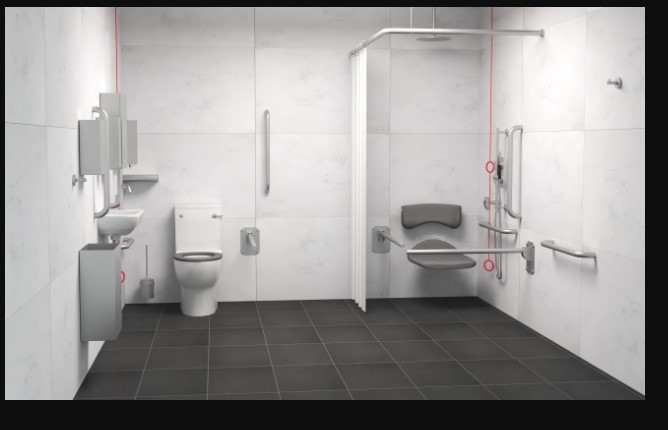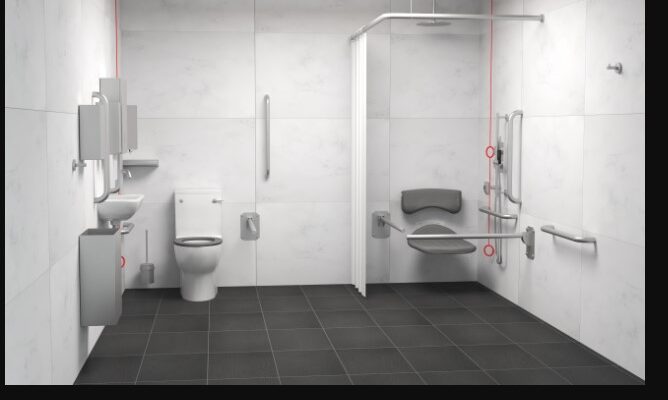Contents
- 1 Introduction To Close Coupled Toilet
- 2 1. What is a Close Coupled Toilet?
- 3 2. Design and Features
- 4 3. Benefits of Close Coupled Toilets
- 5 4. Types of Close-Coupled Toilets
- 6 5. Choosing the Right Close Coupled Toilet
- 7 6. Installation Guide
- 8 7. Maintenance and Cleaning
- 9 8. Troubleshooting Common Issues
- 10 9. Comparing Close Coupled Toilets to Other Types
- 11 10. Environmental Impact
- 12 11. Cost Considerations
- 13 12. Customer Reviews and Recommendations
- 14 13. FAQs About Close Coupled Toilets
- 15 14. Conclusion
- 16 15. Additional Resources
Introduction To Close Coupled Toilet
Close-coupled toilets are a popular option when it comes to choosing the right toilet for your bathroom.
But what makes it so unique?
How does it differ from other types of toilets?
This comprehensive guide will explore everything you need about close-coupled toilets, from their design and benefits to installation and maintenance tips.
1. What is a Close Coupled Toilet?
A close-coupled toilet is a type of toilet in which the cistern is directly attached to the back of the toilet bowl, forming a single, compact unit.
This design is different from traditional toilets, where the cistern is mounted separately on the wall or placed on the floor. The close coupling makes the toilet look sleek and modern while saving space.
2. Design and Features
Compact and Sleek
The close-coupled toilet is known for its compact and sleek design, which fits well in small and large bathrooms. Its integrated look makes it a popular choice for modern bathrooms.
Dual Flush System
Many close-coupled toilets come with a dual flush system, allowing users to choose between a full flush and a half flush. This feature helps conserve water and reduce utility bills.
Variety of Styles
Close-coupled toilets are available in various styles, from traditional to contemporary. Whether you prefer a classic look or a modern aesthetic, a close-coupled toilet suits your taste.
3. Benefits of Close Coupled Toilets

Space-Saving
One of the most significant advantages of a close-coupled toilet is its space-saving design. Integrating the cistern with the toilet bowl occupies less space, making it ideal for smaller bathrooms.
Easy to Clean
Close-coupled toilets are easier to clean than traditional toilets, with fewer gaps and crevices. This design minimizes the areas where dirt and bacteria can accumulate.
Water Efficiency
The dual flush system in many close-coupled toilets allows for better water management, helping you save water and reduce your environmental footprint.
Aesthetic Appeal
The integrated design of close-coupled toilets offers a streamlined and tidy look, enhancing the overall appearance of your bathroom.
4. Types of Close-Coupled Toilets
Standard Close Coupled Toilets
These are the most common types of close-coupled toilets, featuring a standard height and design.
Comfort Height Close Coupled Toilets
These toilets are designed to be taller than standard toilets, providing additional comfort, especially for older people and those with mobility issues.
Back to Wall Close Coupled Toilets
In these toilets, the cistern is concealed within the wall, giving a more minimalist look while saving even more space.
5. Choosing the Right Close Coupled Toilet
Consider Your Bathroom Size
Ensure that the toilet you choose fits well within the available space in your bathroom. Measure the area to avoid any fitting issues.
Style and Design
Choose a style that complements your bathroom décor. Whether you prefer a traditional look or a modern design, there are plenty of options.
Water Efficiency
Look for toilets with a dual flush system to save water and reduce water bills.
Comfort
Consider the toilet’s toilet’s height and design to ensure it meets your comfort needs, especially if you have specific accessibility requirements.
6. Installation Guide
Tools Needed
- Adjustable wrench
- Screwdriver
- Plumber’s tape
- Silicone sealant
Step-by-Step Installation
- Turn Off Water Supply: Before starting, ensure the water supply to the existing toilet is turned off.
- Remove Old Toilet: Disconnect the water supply and remove the old toilet.
- Prepare the Area: Clean the area where the new toilet will be installed.
- Install the Cistern: Attach the cistern to the toilet bowl using the provided bolts and washers.
- Connect Water Supply: Connect the water supply to the cistern and secure it with the plumber’s tape.
- Seal the Base: Apply silicone sealant around the toilet’s base to prevent water leaks.
- Test the Flush: Turn on the water supply and test the flush to ensure everything works properly.
7. Maintenance and Cleaning
Regular Cleaning
Clean your close-coupled toilet regularly with a mild bathroom cleaner and a soft cloth or sponge to keep it hygienic and shiny.
Descaling
Hard water can cause lime scale buildup. Use a descaling agent periodically to keep the toilet free from limescale.
Check for Leaks
Regularly inspect the toilet for any signs of leaks around the base and the water connections. Address any issues promptly to prevent water damage.
8. Troubleshooting Common Issues
Weak Flush
If the toilet flushes weakly, check the water level in the cistern and adjust it if necessary. Ensure the flush valve is working correctly.
Continuous Running Water
If water continuously runs into the toilet bowl, check the flapper valve and replace it if worn or damaged.
Unpleasant Odors
Ensure the toilet is clean, and regularly check the seal around the base. If odours persist, there might be an issue with the plumbing vent.
9. Comparing Close Coupled Toilets to Other Types
Close Coupled vs. Wall Hung Toilets
Wall-hung toilets have a more modern look and save floor space, but they are more complex to install than close-coupled toilets.
Close Coupled vs. Back to Wall Toilets
Back-to-wall toilets conceal the cistern within the wall, offering a minimalist look. However, due to the hidden cistern, they might be more challenging to maintain.
10. Environmental Impact
Water Conservation
Close-coupled toilets with dual flush systems help conserve water, making them eco-friendly for environmentally conscious homeowners.
Sustainable Materials
Some manufacturers use recycled materials to produce close-coupled toilets, reducing their environmental impact.
11. Cost Considerations
Initial Cost
Close-coupled toilets are generally affordable, with many options to fit different budgets.
Installation Costs
Installation costs can vary depending on the complexity of the installation and the plumber’s rates in your area.
Long-Term Savings
The water-saving features of close-coupled toilets can lead to significant long-term savings on your water bills.
12. Customer Reviews and Recommendations
Positive Feedback
Many users appreciate close-coupled toilets’ compact design and ease of cleaning. The water-saving dual flush system is also frequently praised.
Common Complaints
Some users report issues with the flush mechanism or the durability of certain components. To avoid such problems, it’s essential to choose a reputable brand.
13. FAQs About Close Coupled Toilets
What is a close-coupled toilet?
A close-coupled toilet is a type of toilet in which the cistern is directly attached to the back of the toilet bowl, forming a single, compact unit.
How does a dual flush system work?
A dual flush system allows users to choose between a full flush and a half flush, helping to conserve water and reduce utility bills.
Are close-coupled toilets easy to install?
Yes, close-coupled toilets are relatively easy to install, especially compared to other types of toilets like wall-hung or back-to-wall toilets.
What are the benefits of a close-coupled toilet?
Close-coupled toilets save space, are easy to clean, and often have water-saving features. They also offer a sleek, modern design.
How do I maintain a close-coupled toilet?
Regular cleaning, descaling, and checking for leaks are essential for maintaining a close coupled toilet. Address any issues promptly to prevent damage.
14. Conclusion
Choosing a close-coupled toilet can be brilliant for anyone looking to enhance their bathroom’s functionality and aesthetic appeal.
Close-coupled toilets offer a practical and stylish solution for modern bathrooms. They are compact, easy to install, and water-saving.
Whether renovating your bathroom or building a new one, a close-coupled toilet is worth considering.
15. Additional Resources
For further information on close-coupled toilets, check out these resources:
By understanding the benefits and features of close-coupled toilets, you can make an informed decision that suits your needs and enhances your bathroom experience.
If you gained new insights from this article, explore our blog, Gimkit, for more enlightening content.



